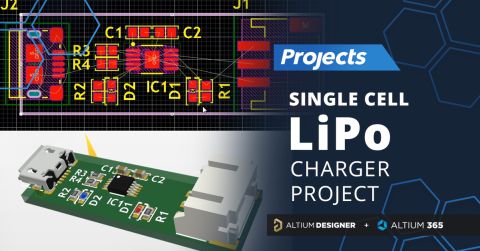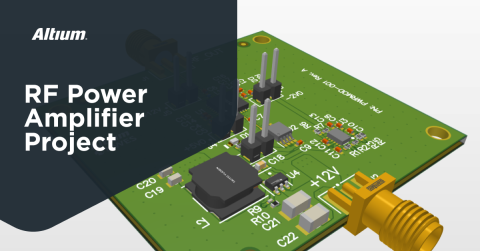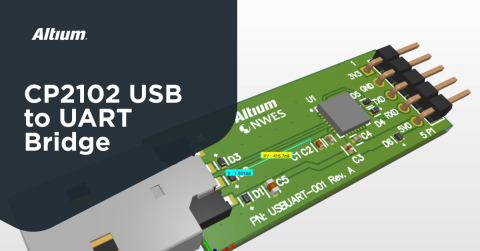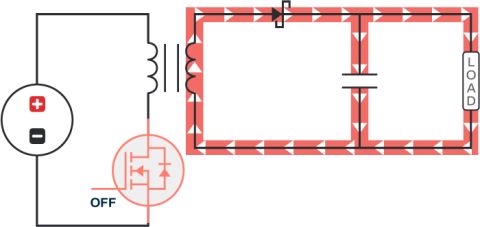Using Altium Designer for the Cellular Industrial IoT

The “Internet of Things” (IoT) has been a hot topic for years. Connecting and building “things” is something everyone seems to be doing. Back in 2014, I was heavily considering getting “Thing” from The Adam’s Family on the Internet with the NXP Kinetis K64 MCU!

If you want a good chuckle, there are some additional details on the Hackaday site.
The Case for Cellular IoT Hardware in Industry
The term IoT can conjure up thoughts of failed home gadgets powered by cloud services that eventually get shut down. It’s unfortunate that “internet connected toilets” get a lot of press when there are applications that are ideal use cases for the IoT. I feel that for many industrial scenarios, the IoT, and particularly cellular IoT hardware, is a cost-effective way to deliver a connected solution which offers continuous value. The industrial IoT is more than just transmitting raw data; we can now use the power of the cloud to transform data into actionable intelligence to keep many industries working at peak efficiency.
All the “things” that make modern life possible are driven by large machines that represent a large capital investment and that carry ongoing maintenance costs. These massive machines are part of a value stream that allows a business to function. Like any device made by humans, these machines require upkeep and maintenance. In many cases, an organization pays a technician to check and repair the machine routinely. The technician’s time and overhead cost money, and it doesn’t matter if the technician is internal to the organization or is part of a vendor’s maintenance team for which you pay a service fee. The best case is that the technician can routinely (say monthly) inspect these machines and show up for repairs when there are issues. After all, when the machines making Oreo cookies goes down, we need a solution ASAP!
In this scenario, you can put a dollar figure to the cost of routine maintenance checks and repairs. This monthly “subscription” is the cost of doing business. Instead of paying someone to perform maintenance checks regularly, why not automate the data collection and use the power of cloud computing to make inferences about what is going on? Once you understand the bottom line of your operating and maintenance costs, you can now see where the IoT and cellular IoT are of incredible value. I have observed many people turned off by the idea of “monthly” fees for IoT. In the context of the scenario I have presented, it is the most inexpensive way to do business, and it provides continuous value. You can know the state of your critical processes anytime, anywhere. Local to me, there is a company which saves other companies hundreds of millions a year using the industrial IoT model.
Why Use Cellular Connectivity for Industrial IoT?
For this concept to work, we need our sensors and edge devices to connect to the Internet. I argue that cellular communication is an inexpensive, secure, reliable way to provide connectivity for these scenarios.
- New protocols. There are new cellular protocols, namely CAT-M1 and NB-IoT, which enable low power (even battery-powered) connectivity solutions and are backed by networks which have had billions of dollars of investment.
- Low cost. Some may say “Why not WIFI, isn’t that free?”. Nope! Network connectivity is never free. You can always trace its cost to somewhere or someone. Think about a network engineer’s time and consider a fully burdened rate of $150USD/hour, an actual price to pay for a network security engineer to audit and provision devices. With cellular, you can end up with data plans that are a few dollars per month. If the report rate is small, it can be sub-dollar a month.
- Instant secure deployment. The idea of “parallel” networking has been a very important component in securing the Industrial IoT. Using cellular, one can send a solution that is ready at unboxing, which does not need to touch a customer’s internal network. The global cellular network for sensors has had 10’s of billions of dollars of investment, allowing access to the most advanced wireless network humans have ever built.
Ask yourself this question: If the problem you are solving does not warrant a few dollars a month in being able to access information remotely, is there even value in monitoring the asset or process? If we are talking about machines that cost tens or hundreds of thousands of dollars, the decision is very simple.
An Interesting Cellular IoT Application
With cellular, a customer can get connectivity out of the box without incurring the expense of a network engineer on every deployment. We can even isolate the network traffic, so the IoT solution is never visible to the public internet. Data is available and secure. When you need easy installation and instant customer value, cellular is a great option. I am currently working on a fermentation monitoring platform for craft brewers. For the TZero Brew service, we are regularly asked if it is Wi-Fi enabled. The short answer is, “No”. For many products, Wi-Fi is an awful choice and ends up eating away at the value proposition of the product. This may seem contrary to popular opinion, but when you focus on customer value, it is easy to understand why. The goal is to deliver continuous value and get in the brewery without interrupting a brewer’s daily workflow. We are here to help people focus on their craft. If the solution is not easy to install and deploy, it is not providing value.

The TZero Brew product starts with an in-house designed Ultrasonic Probe. There is data processed in the probe "at the edge" with a reduced set sent to the "cloud" through the cellular network. We use the power of cloud processing to do more complicated algorithms to estimate the state of the fluid so brewers can gain knowledge of what is going inside fermentation vessels anytime, anywhere. With this model, updates to our algorithms are easy as everything is deployed in the cloud.

This fermentation monitoring application extends beyond brewing. We can remotely access critical fluids, such as glycol in $150k chillers, to keep critical processes running and machines operating smoothly. We are even available to power the next generation of bio-farms for synthetic biology applications!
Sure, for delivering Instagram and YouTube, Wi-Fi is a useful data pipe. For an industrial-grade service offering, Wi-Fi does not always provide the most value to the customer. At TZero, there have been two general scenarios that we have encountered when getting sensor data into the Cloud:
- You walk into a customer location, and there is a consumer-grade router and switch in a back room. Great. You’re given the Wi-Fi password and the default SSID. How is that for security? Are you willing to let a consumer-grade router in a closet control your service quality? Even the best intentions yield spotty service.
- A larger organization will almost certainly have IT staff and some form of digital security policy. In this scenario, you will not be able to connect to their network (wired or wireless) without some level of audit. It will not be simple and can potentially take weeks of red tape and approval. How much does a network engineer cost for hours of their time? Both the customer and solution provider incur a non-trivial deployment cost.
Our solution bypasses the connectivity conundrum completely by using cellular. Coupled with the fact that some equipment may be outside and have no WIFI connectivity. The solution is ready and configured on day one. Indeed, cellular coverage is not everywhere, but I would argue that it is in most places where critical processes are. It can cover a vast swath of applications. Couple that with the fact that technologies such as CAT-M1 and NB-IoT can reach further than the modulation schemes used in your phone’s cellular chipset. This capability is baked into the 3GPP standards, and they were engineered for the IoT.
Cellular IoT Hardware Design With Altium
The price of cellular solutions has dropped significantly over the years. At one time, the only way to get to a solution was to use a packaged solution on a PCB module. There are now PCB level solutions that are low cost, easy to integrate into your design, and have features to do everything, including running application code in a single solution. One such offering is the Nordic Semiconductor nRF9160:

The nRF9160 incorporates two processors. There is a Cortex M33 Core with 1MB flash and 256KB RAM coupled to a network processor dedicated to the cellular communication. In addition to being able to work on CAT-M1 and NB-IoT networks, it also supports GPS. There is enough power in this module to handle any local sensor/edge processing and deal with TLS security stacks while being able to participate in the cellular network. All of this at a price into the $16 at QTY 1k. There are options without GPS that are even more inexpensive. This is a fantastic deal and a game-changer for cellular IoT modules. The nRF9160 is tuned for low/power battery applications that can blink data on the network for years.
What I like most about the nRF9160 is that Nordic gives you full Altium Files for their development kit designs. This means that you have an accurate reference for the schematic symbol, footprint as well as the RF layout. You get to see a working design for the antenna matching network as well as the GPS LNA. For example, here is an example of what you get for the “Thingy91” prototyping kit.



Everything needed to execute your cellular IoT hardware design is there. Nordic also offers Altium Designer files for the nRF9160-DK, which was a tremendous value for me. We are currently doing additional designs for the TZero Brew product to support applications in the Synthetic Biology and Glycol monitoring. Using the Nordic Reference, I was able to get my design ready in short order. There was even room for “Spiny”.


The important point to make here is that I was able to quickly get a cellular IoT module design complete so we could get budgetary estimates very fast to make decisions. I am an advocate of making your mistakes quickly, and Nordic made it very easy to move through the hardware design process. The reference material doesn’t stop at the hardware; Nordic also provides excellent software support to use the module to its maximum potential. An SDK based upon the Zephyr Real-Time Operating System is provided to bootstrap the firmware efforts. Nordic sets the standard for providing documentation and reference designs!
I hope I have given you some points to consider about cellular IoT module design, including for industrial IoT. It has never been easier to start using cellular communications in your products.
Cheers!
Would you like to find out more about how Altium can help you with your next PCB design? Talk to an expert at Altium.











